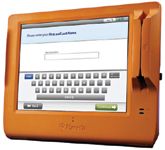Article
10 new tech devices that could improve your practice
Author(s):
A wide range of new equipment can help improve your practice - and the quality of patient care.
By now, you may have assembled a list of holiday gift ideas for family, friends, and colleagues. But what about your practice? Isn't there a new device or tool that would be the perfect addition to improve growth or fix a nagging problem?
If nothing recently has caught your eye, Medical Economics offers a hand-picked list of 10 new devices that could help improve efficiency, patient care-or both. Ranging in price from free to $125,000, not all of these gadgets will fit every practice or budget. But most will be affordable for many practices, and could make considerable contributions to your services or assist with business operations.
While no single piece of equipment will remedy all of the issues that primary care physicians face, the devices on our technology shopping list aim to at least make the hours you spend at your practice a little easier, and perhaps help you get you out of the office a bit earlier.
WHAT: Patient check-in digital pad
BY: Phreesia
PRICE: Free
CONTACT: http://www.phreesiapad.com

PRACTICE MANAGER SAYS: "We've gone from 24 check-in forms down to none," says Sue Zumwalt, practice manager at Pediatric Associates in Stockton, California, which started with 4 pads at the four-physician office and now is up to 16. "We've saved several hundred dollars a month in paper and printing costs."
PROS: It's free. Plus, the PhreesiaPad can reduce the amount of paperwork for your patients and front-desk staff. Patients verify current information rather than filling out the same forms each visit. The medical-condition screening questions can go more in-depth, and your staff doesn't have to decipher poor handwriting.
CONS: In order to provide these pads for free, Phreesia runs pharmaceutical advertising on the device screen, which may bother some patients and doctors. Zumwalt, however, says no one at her practice has complained about the educationally formatted presentations, and the patient can choose not to view them. The pad may be less popular with non-technologically inclined patients and staff, and may require some patient education. "There's a little apprehension at first," Zumwalt says.





